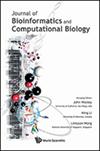涉及重复区域的脚手架改进。
IF 0.9
4区 生物学
Q4 MATHEMATICAL & COMPUTATIONAL BIOLOGY
Journal of Bioinformatics and Computational Biology
Pub Date : 2021-12-01
Epub Date: 2021-12-17
DOI:10.1142/S0219720021400163
引用次数: 0
摘要
在本文中,我们通过一个初步的研究,探讨了重复元件在装配过程中的影响。我们分析了一种重复元件的存在和性质之间的联系,称为转座元件(TE)和基因组组装中的错误组装事件。我们建议在脚手架步骤中考虑到重复元素(包括te)的存在来改进装配。我们对结果进行了分析,并将错误装配与纠正前后的TEs联系起来。本文章由计算机程序翻译,如有差异,请以英文原文为准。
Involving repetitive regions in scaffolding improvement.
In this paper, we investigate througth a premilinary study the influence of repeat elements during the assembly process. We analyze the link between the presence and the nature of one type of repeat element, called transposable element (TE) and misassembly events in genome assemblies. We propose to improve assemblies by taking into account the presence of repeat elements, including TEs, during the scaffolding step. We analyze the results and relate the misassemblies to TEs before and after correction.
求助全文
通过发布文献求助,成功后即可免费获取论文全文。
去求助
来源期刊

Journal of Bioinformatics and Computational Biology
MATHEMATICAL & COMPUTATIONAL BIOLOGY-
CiteScore
2.10
自引率
0.00%
发文量
57
期刊介绍:
The Journal of Bioinformatics and Computational Biology aims to publish high quality, original research articles, expository tutorial papers and review papers as well as short, critical comments on technical issues associated with the analysis of cellular information.
The research papers will be technical presentations of new assertions, discoveries and tools, intended for a narrower specialist community. The tutorials, reviews and critical commentary will be targeted at a broader readership of biologists who are interested in using computers but are not knowledgeable about scientific computing, and equally, computer scientists who have an interest in biology but are not familiar with current thrusts nor the language of biology. Such carefully chosen tutorials and articles should greatly accelerate the rate of entry of these new creative scientists into the field.
 求助内容:
求助内容: 应助结果提醒方式:
应助结果提醒方式:


